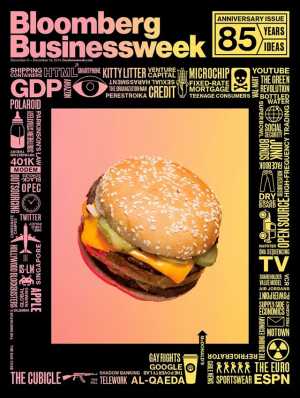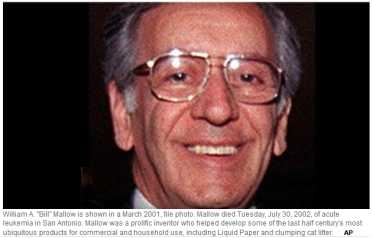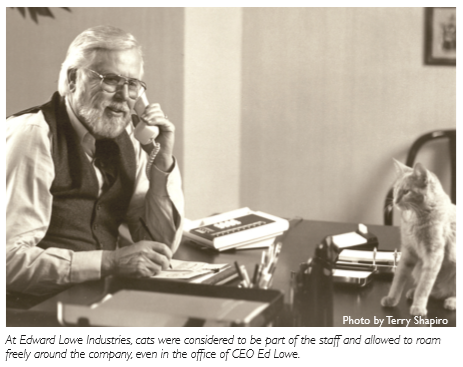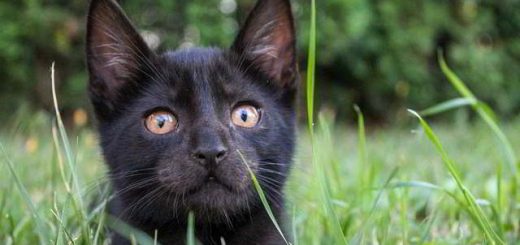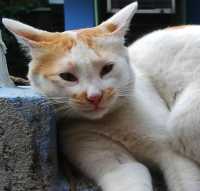History of Cat Litter
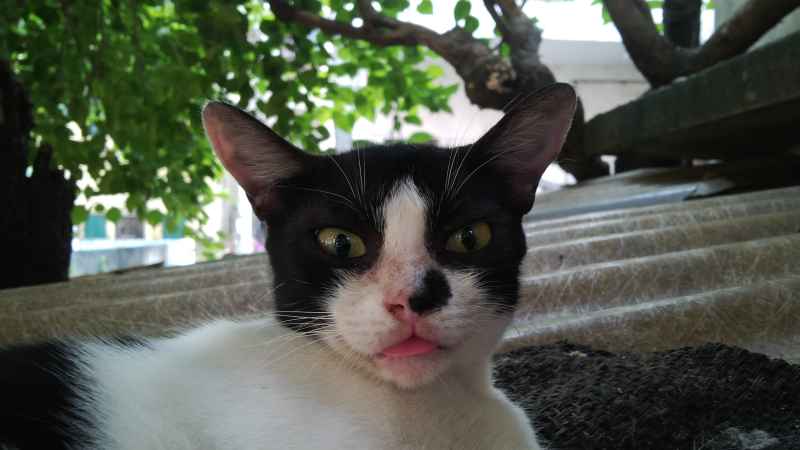
History of cat litter is not something the average cat owner bothers about but we thought it best to cover this topic just in case someone does.
Here’s a table of content for your convenience.
- Introduction
- Creators of Clumping Clay Cat Litter
- Kitty Litter & Rise of the Indoor-Only Cat
- Ed Lowe & the Kitty Litter Story
- Kitty Litter vs Clumping Clay Cat Litter
- What Litter do Cats Prefer?
Cat Litter | Clump, Dust and Hidden Deaths
From Lowe to Landfills
We’ve heard of Edward Lowe, the inventor of cat litter – or Kitty Litter, as he named it.
See if these names ring a bell as well: Thomas Nelson, William Mallow…no? Well, Nelson created the first version of the clumping cat litter from sodium bentonite in 1984. Mallow perfected the clumping formula.
If you knew that already, congratulations, you are a true Litterbuff!
There is a huge difference, however, between Lowe’s Kitty Litter and what Nelson and Mallow created (the clumping clay litter that you buy today).
In all fairness, they were both trying to create the best cat litter they could think of and probably had no idea at the time that clumping clay cat litter could kill cats.
You can click here to open a new tab and read a detailed review of this particular cat litter.
Originally, Lowe had intended to sell a special type of clay to local farmers for nesting chickens.
The farmers were not interested. When a local woman named Kay Draper came along looking for sand for her cat’s litter box (she had brought the cat in from the January cold), Lowe offered her some of the unsold clay. (Source)
Cliched or not, ‘and the rest is history’ is apt in this context. Thus it all began in 1947.
Incidentally, Bloomberg Businessweek, in its anniversary issue (December 2014), mentions Kitty Litter or, more precisely, the birth of Tidy Cat litter in 1954 as one of the 85 most disruptive ideas in our history (#73).
Creators of Clumping Clay Cat Litter
Although Ed Lowe’s discovery paved the way to his Tidy Cat formulation, the search for an even better (read, clumping) litter was on. The current projection is that the market for bentonite cat litter (the commonest ingredient in clumping clay cat litter) is expected to grow to $4.11 Billion by 2029. Here’s all that we could find on the origin of clumping clay cat litter.
Thomas Nelson
There’s scarce information on Nelson. We learn from unconfirmed sources that Nelson worked as a biochemist and a Professor of Medicine in Houston’s Baylor College. He had a passion for breeding Persian cats and in looking for a viable alternative to existing cat litter, accidentally came upon a formula that clumped better than what was available during that time. Regrettably, our email to the Department of Records, Baylor College of Medicine, requesting information about Professor Nelson never received a reply.
William A. Mallow
Mallow was a polymer chemist who was also a prolific inventor. He refined (just as he refined and improved upon Professor Nelson’s clumping formula) inventor Bette Nesmith Graham‘s typewriter correction fluid known as Liquid Paper, at her request. He also figured out how to clean the moulds of peanut butter at M&M factories, improved upon the lifelike skin covering of the dinosaurs at Animal Kingdom (Disney World, Orlando), worked on tiles for space shuttles and even found a way to artificially age Scotch Whisky.
Unsubstantiated sources indicate that he perfected his clumping litter formula in 1997 which resulted in the creation of a cat litter called Scoop Away Clean. Arms & Hammer may have been the first company to begin production of Scoop Away Clean based on Mallow’s formula.
Currently, Clorox owns a brand called Scoop Away (acquired from Arms & Hammer). In 2022, Clorox continued with the expansion of its cat litter business with a state-of-the-art manufacturing facility established in Martinsburg, West Virginia. However, as far as we are aware, Clorox does not mention Mallow’s role in the original clumping formulation. Any contribution from our readers in this area, in particular, would be most welcome.
Mallow died of Leukemia at the age of 72 in August 2002. (Source)
Kitty Litter and Rise of the Indoor-Only Pet Cat
Cats were loved and fed by humans before Kitty Litter came to be but having cats at home was not nearly as much of a commonplace as it is today. Cats cannot be put on a leash like dogs and taken out to relieve themselves at specific times of the day. Consequently, there must be a litter box at home.
Pre-Kitty Litter boxes contained ash, dirt, sawdust or sand for litter which could not effectively mask the noxious odor of cat urine. Add to that paw prints covered in wet ash or dirt all over the floor and the bed, or sand tracking all over the house and you had a full-time cleaning job with even a single cat for pet. If you were late with the cleaning of the litter box, urine would pool at the bottom or even leak out of it.
With Kitty Litter, there was finally something super-absorbent compared to all previous litter materials. It was a whole lot better at masking odor as well. At the time, it was the best cat litter available (indeed, the only thing that was sold officially as cat litter).
Edward Lowe’s discovery effectively made way for cats as indoor-only domestic animals. “The U.S. and Mexico cat litter market is expected to grow from 2023 to 2030. Data Bridge Market Research analyses that the market is growing with a CAGR of 4.1% in the forecast period of 2023 to 2030 and is expected to reach USD 4,469.05 million by 2030 from USD 3,240.48 million in 2022.” (Source)
Edward Lowe and the Kitty Litter Story
Born in 1920 in St. Paul, Minnesota, Lowe grew up in Cass County, Michigan. After serving in the Navy, he joined his father’s company, which sold various commodities including industrial absorbents. Among these absorbents was a type of clay granule made from fuller’s earth.
In 1947 Lowe saw a new opportunity for these granules when a neighbor by the name of Kay Draper asked him for some sand to use in her cat’s litter box. Because of the cold weather, she had brought her pet indoors — a rare privilege for cats at the time. Unfortunately, the ashes she was using in the cat’s litter box resulted in sooty paw prints all over the house.
Instead of sand, Lowe gave her a package of fuller’s earth granules. After rave reviews from her and other neighbors, Lowe began marketing the material as Kitty Litter at pet shops and cat shows.
Two years later, he left his father’s business and devoted himself to building demand for Kitty Litter. By the time he sold the clay division of Edward Lowe Industries (ELI) in 1990, the company had grown to about 600 employees and $165 million in annual sales…
…Lowe launched a new brand, Tidy Cat, in 1954 to sell in supermarkets, while he positioned Kitty Litter as a boutique brand for pet stores and veterinarians…
… Among the many improvements that ELI introduced were dust-free versions of Tidy Cat and Kitty Litter in 1985. Four years later, the American Veterinary Medical Association honored Lowe for promoting cat health with his dust-free products.
Note:
This entire article on the history of cat litter was once a part of our home page write-up.
The portion in Blockquote above as well as the image were from a page in the Edward Lowe Foundation website that no longer exists.
You can find the current, slightly altered version here.
Difference between Kitty Litter and Clumping Clay Cat Litter
What Edward Lowe used for his brand of Kitty Litter and later, Tidy Cat, was basically kiln-dried clay also called Fuller’s Earth. Fuller’s Earth has many therapeutic applications. Even though it is highly absorbent and very effective as litter material, in the presence of excess water its granules turn into mud.
Fuller’s Earth does NOT form a solid clump which is the trademark quality of clumping (sodium bentonite) clay cat litter. Even today you can buy litter made from Fuller’s Earth.
Thomas Nelson found that sodium bentonite, when dried instead of baked acquires a significant clumping property. He mixed quartz with it to further enhance the clumping.
Previously, calcium bentonite would be used in cat litter preparation, and it is often used even today in holistic therapies. In fact, when you buy ‘food grade bentonite clay’, it is calcium bentonite. Sodium Bentonite also has therapeutic properties and is used externally for cosmetic purposes. However, one must also be aware of possible dangers like lead or arsenic poisoning. If you wish to use clay for any manner of therapy, you should probably read more about it here.
The clumping property of the new formula using dried sodium bentonite clay was markedly different and more powerful than that of Kitty Litter or Tidy Cat. Naturally, it became extremely popular among cat owners and in the absence of proper information, is often considered the best cat litter available.
What Litter Do Cats Prefer?

Our home page write-up is on the subject of the best litter for cats. However, it does not necessarily explain what litter cats prefer. If you’ve had cats, you may have had the errant kitty soiling your bed of the sofa. Obviously, neither qualifies as litter.
Cats bury their poop so that larger predators cannot find them by tracking that odor (ugh). So what they have to do to go about doing their business is digging a small hole and then filling it back in.
For this exercise, anything that is easy to dig – like loose soil or sand – seems good enough. Soil or sand does not have any artificial fragrance, so we’re guessing cats probably don’t have a particular liking for scented litter, either.
And all of the above indicate that unscented loose particles are good enough for the average cat.
For cats who have undergone surgery recently, you will want to make things comfortable by offering them a litter that is light and doesn’t stick to their paws.
Being easy on the paws is especially important when you have a declawed cat. A declawed cat is basically a mutilated cat with half their fingers removed (and not just the claws). And they bear that trauma throughout their lives.
For more information, please refer to this section on our homepage.

